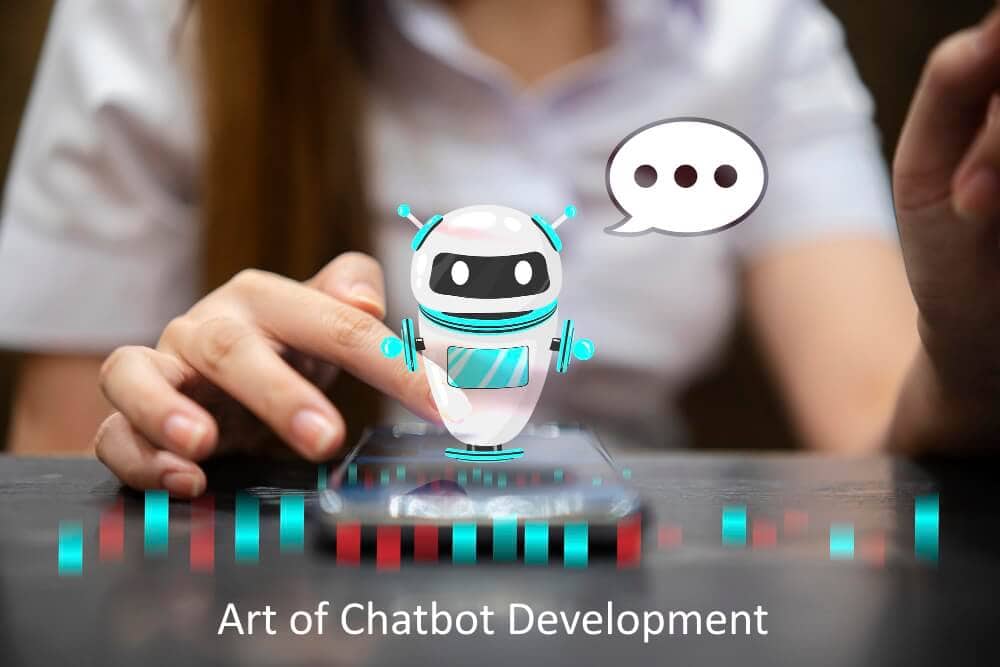Chatbot development have become a popular trend in the tech industry, with many companies and businesses incorporating them into their websites and messaging platforms. In fact, chatbots have become an essential part of the tech industry, given their ability to initiate conversations and provide excellent customer service support. The demand for chatbots continues to grow, and going by the current trends, it’s safe to say that the chatbot market is only going to get bigger.
In this article, we’ll explore the art of chatbot development, discussing essential features and how to design chatbots to achieve optimal performance. In today’s digital era, chatbots have become integral to businesses by enhancing customer experience and streamlining operations. This blog aims to provide a comprehensive guide to mastering the art of chatbot development. Chatbots are digital assistants designed to mimic human conversation and respond to user queries. They fall into three main categories: Rule-based, Self-learning, and Hybrid chatbots. While Rule-based chatbots follow predefined rules, Self-learning bots utilize machine learning algorithms to improve their responses over time. Hybrid chatbots, on the other hand, combine the features of both.
1. Understanding the Basics of Chatbot Development
Before diving deep into the development of a chatbot development, it’s crucial to understand the basics. At its core, a chatbot is a simulated conversation that takes place between a human and an artificial intelligence-driven bot. From a development standpoint, chatbots are built using programming languages such as Python, JavaScript, and Ruby. When programming, developers must consider the chatbot’s objective, functionality, and integration. Additionally, developers need to choose the right chatbot platform, determine the natural language processing tools, and optimize the bot’s integration with APIs to ensure its effectiveness.
2. Designing a Chatbot Flow and User Experience
Chatbot developments that are poorly designed have the potential to frustrate users quickly, resulting in a decline in user adoption and satisfaction. Thus, it’s essential to consider the chatbot’s flow and user experience when developing them. To achieve optimal performance and usability, developers must define the bot’s persona, identify user needs, clarify the bot’s purpose, and identify user scenarios. The chatbot needs to provide an excellent user experience, and thus, it must be intuitive, user-friendly, and understand the user’s requirements.
3. The Role of AI and Machine Learning in Chatbots
AI and Machine Learning, key components of the ever-evolving trends in artificial intelligence, are the backbone of chatbots, enabling them to understand, learn, and react to user inputs. These technologies significantly enhance the functionality and effectiveness of chatbots, allowing them to deliver personalized and contextually relevant responses.
- AI and Machine Learning play a crucial role in enhancing the capabilities of chatbots. They enable the chatbots to understand complex requests, interpret user intent, and provide relevant responses.
- With the help of Machine Learning, chatbots can continuously learn from the conversations they have with users and improve their responses over time.
- AI technologies like Natural Language Processing (NLP) help chatbots understand human language, making the interaction more natural and human-like.
- AI-powered chatbots can also analyze user behavior and patterns to provide personalized experiences and recommendations.
- By leveraging AI and Machine Learning, chatbots can handle multiple requests simultaneously, enhancing their efficiency and scalability.
4. Incorporating Machine Learning for Better Output
To build a highly capable and versatile chatbot, incorporating machine learning tools can significantly impact performance. Machine learning makes it possible for chatbots to learn from previous interactions and provide personalized recommendations. Developers can use machine learning algorithms to improve natural language processing, text identification, and sentiment analysis in the chatbot. Also, developers must ensure that the chatbot constantly learns and improves its functionalities, considering the feedback it receives from users.
5. Securing and Testing the Chatbot
Developers must ensure that the data exchanged between the bot and the user is secure. This means incorporating secure communication protocols like SSL and HTTPS into the programming. The chatbot must be rigorously tested to ensure its bug-free and efficient as expected. Testing allows developers to identify and fix failures before the chatbot goes live. Testing should be done throughout the chatbot development lifecycle and should straddle both automated and manual testing. Developers must also consider the chatbot’s scalability, ensuring the infrastructure can support many interactions between the bot and users.
6. Final Thoughts: Mastering the Art of Chatbot Development
The chatbot development process may seem daunting, but by understanding the basics, designing effective user flows, incorporating machine learning, securing and testing the bot, your chatbot project can be a success. As chatbot functionality continues to evolve, chatbots can be used in different industries effectively. It’s essential to develop unique features and functionalities that will differentiate your chatbot from its competitors. In conclusion, mastering the art of chatbot development is essential for businesses that intend to leverage the chatbot’s many benefits in customer engagement and experience.
Conclusion
We’ve discussed the basics of developing chatbots, designing effective user flows, incorporating machine learning, securing and testing your chatbot project, and how to differentiate your chatbot from its competitors. As the chatbot market continues to grow, developing a chatbot that engages customers and provides efficient customer service support can go a long way in enhancing your business’s growth and success. With technology evolving constantly, incorporating chatbots into your business strategy can be a game-changer.
Author Bio:
Arjun Solanki is a Business Growth Strategist at a Leading Software Development Company. He has experience in developing and executing digital strategies for large global brands in a variety of business verticals. Apart from working on a long-lasting relationship with customers and boost business revenue, he is also interested in sharing my knowledge on various technologies and its influence on businesses through effective blog posts and article writing.
